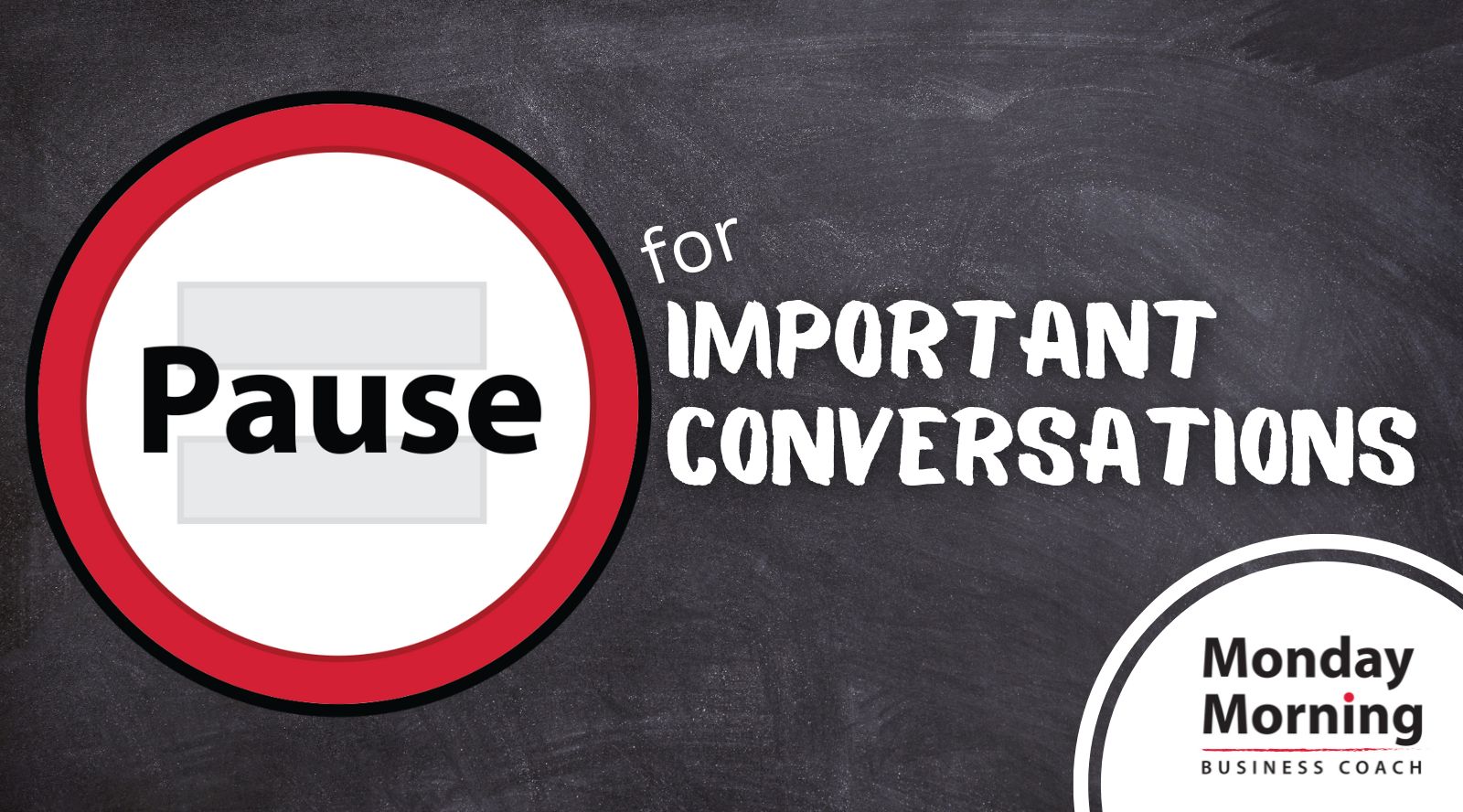We’ve recently been talking about ways to use our PAUSE framework as you’re leading meetings, anytime throughout your day, and last week as a reminder to pause and remember our fallen heroes.
This week, we’re continuing to talk about the PAUSE and suggesting some additional ways you can use it to prepare for, participate in, and reflect on important conversations.
Using the PAUSE
is one of the most significant actions
you can take to strengthen
your relationships, your leadership,
and your personal satisfaction with your life.
This week, we’re continuing to talk about the PAUSE and suggest some ways you can use it to prepare for, participate in, and reflect on important conversations.
PAUSE for Important Conversations
- In the morning, review your calendar and identify those times when you’re likely to have conversations that you’ll find challenging, or meetings you’ll be in with people you find difficult.
- Reflect on what you expect could happen and consider how you can integrate the PAUSE to interrupt your reactivity and respond like the leader that you are.
- Remember, in our world, a leader is anyone who is willing to influence their world and be influenced by their world, regardless of role or title.
- You’re a leader in your life and work. Make the best of it by planning when you may need to pause.
- When you are in a meeting or about to join a discussion, remind yourself of your goal for you—staying calm, speaking up instead of shrinking back, listening closely instead of talking over people—and see yourself PAUSING and doing exactly what you’ve planned.
- When the stakes are high and you’re already in reactive mode—heart racing or head closing down or face getting red—PAUSE. (this is the master level of pausing!):
- Pause by taking a sip of water, making a note, taking a few breaths or if necessary by excusing yourself for a bathroom run.
- In this moment, ask yourself, Is what I’m about to do or say in alignment with my goals?
- Your goals matter because you matter. Don’t let your brain’s reactivity get in the way of what is important to you.
- Pause after a discussion and consider asking yourself whether or not you showed in a way that is in alignment with your goals.
- If so, that’s great!
- If you don’t feel that you showed up in a way that’s in alignment with your goals, what would it look like for you to go back to that person(s) and clear the air?
- Could you apologize for your reactivity, explain how you had hoped to show up, and then make sure that you’re on the same page with what the next steps are?
Reactions take away your power
and decrease your credibility.
Reactive people rarely get the respect or the attention of people they want. If you’re going to effectively influence others, and if you’re going to be influenced by others (especially during stress-filled times), you have to interrupt old reacting patterns. This is what the PAUSE is designed to do.
Planning to PAUSE is a great way to introduce it into your world. Use our PAUSE framework to help you prepare for that next difficult meeting or conversation.
It may not go exactly as you picture it, but this is a very powerful and productive tool that will help you begin to defuse your triggers–even if just a little at first.
Try it out and let us know how it goes!
If you’d like support
incorporating the PAUSE into your day,
contact us today.


